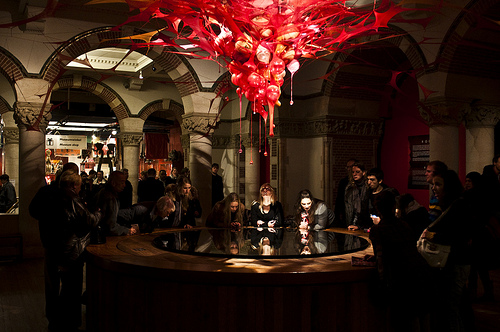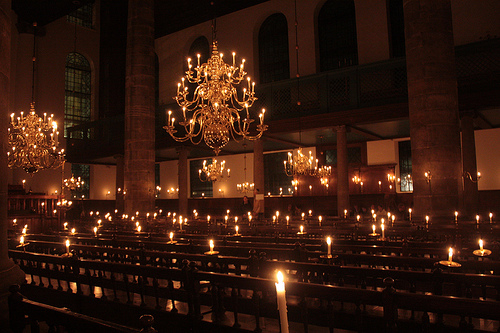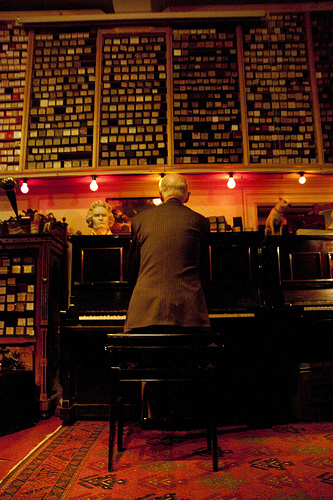
Once a year, Amsterdam’s museums put on special programmes and are open very late in a celebration called Museumnacht. Variations on this simple concept take place in cities across the globe, making it a tried and true model to get people into museums.
I’m a newcomer to Amsterdam, but a hardened culture consumer. I’ve seen this concept done before and know its potential, though I haven’t always had the ideal experience. What makes Amsterdam’s Museumnacht stand out as exceptional are three key things: letting go of the velvet rope, taming the devil in the details, and keeping it local.

Letting go of the velvet rope:
Amsterdam’s museums are among the best in the world, housing priceless treasures in buildings that are often also of architectural significance. With this in mind, you might expect that there are a lot of measures in place to protect the buildings and artifacts, and the first line of defence is miles of velvet rope, or other obvious measures that set a certain tone. I have found that there are no obvious extraordinary measures in place to protect these buildings and artifacts from the hordes of drunk and merry people marauding through town. Perhaps treating people like responsible adults has had the desired impact, as I haven’t witnessed any events that might make a museum director wish she’d used a few extra miles of velvet rope, either. If extra health and safety measures are being implemented, they are nearly invisible, which has a significant positive impact on the tone of the whole event.
Taming the devil in the details:
The Museumnacht website is good, allowing me to browse other people’s agendas for the night, which gave me a quick head start when planning my night this year. But even if you don’t stumble upon this great feature, which requires a little scrolling to get to, they provide other paths to suggest single events or entire agendas for the evening. The event information is sliced and diced in as many ways as possible: time, location, categories, even a kind of overall mood or “buzz”. Several ready-made agendas corresponding to personality types (urban explorers, art lovers, socialites) also provide a general jumping off point.
In short, the organisers of Museumnacht clearly understood the problem of a great programme packed with details: faced with too much choice, it’s easy for potential visitors to get freaked out and decide to just skip it rather than do a lot of research. Making it easy to jump in to the programme with a particular angle is the only solution, and they’ve done a great job of this.
Keeping it local:
Most of the promotional material, including the programme guide, is in Dutch only. This is a strategic decision in a city where most people speak excellent English and lots of things, even government services, are provided in English as well as Dutch. The cultural riches here are very accessible for tourists year-round. Once a year there is an event really for locals, not tourists, and the language decision makes that clear.
The price tag is reasonable (the 17.50 EUR ticket gets you entrance to everything, plus free public transportation all night), and prices for food and drink at each venue are fair. Also if you hang on to your ticket, you can use it to get into any of the participating museums free on a later date. This nice added perk underscores the local emphasis, and is gentle encouragement to return and explore a venue further.
I went last year (when I happened to visit at the right time), and this year again as an Amsterdam resident. I will definitely be back again next year. That said, it’s important to balance my high praise by noting that of course it is not perfect: the more popular venues (Rijksmuseum, for example) can have enormous queues, sometimes the events are not quite as advertised (the edible insects for sale at De Hortus this year ran out very early, which was a disappointment), et cetera. But these are minor glitches in what is otherwise a well-oiled machine. Other cities would be wise to copy the ingredients for success that have been deployed so well here in Amsterdam.
